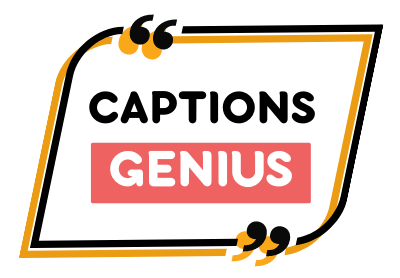In 2024, we traded our rent payment for total freedom. We were tired of watching our money disappear every month on an apartment we would never own, feeling stuck in a cycle of bills. The entire cost of our new off-grid life, from the land itself to the solar panels on our roof, was less than a used car: under $15,000.
You have probably seen the videos online: perfect, magazine-ready off-grid homes with massive solar arrays and fancy equipment that cost hundreds of thousands of dollars. They look amazing, but they can make you feel like a self-sufficient life is a dream that’s impossible to afford. That is not true.
It is a real-world guide for regular people who are willing to trade hard work for financial freedom. We will show you the exact, practical steps we took to build a working off-grid homestead. This was built with our own hands and a very small budget, proving you don’t need to be rich to live a life you own.
The $15,000 Off-Grid Budget Breakdown: A Realistic Look
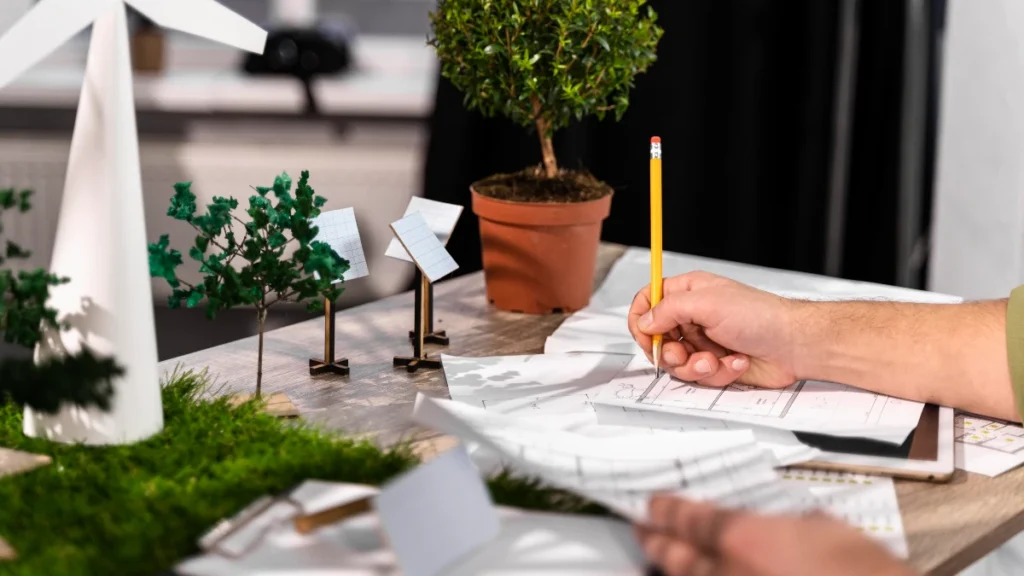
Our budget was tight, so we had to be smart. This meant focusing on what we truly needed, not what looked nice. Think of this as “Phase 1.” It is a starting point that is safe and livable. You can always add more later.
The most important part of this budget is not money. It is “sweat equity.” That means doing the work yourself. Instead of paying a builder $10,000 for labor, we spent our weekends for a few months building our cabin. That work is value that you create yourself.
Our budget was guided by a few core principles:
- Function Over Form: The goal was a system that worked safely. Making it look pretty can come later.
- Used and Reclaimed First: We never bought a new item if a used one was available.
- DIY Everything: We learned how to do everything from framing walls to wiring solar panels. The only thing we paid for was professional advice when safety was a concern.
Here is where every dollar went.
| Category | Cost | % of Budget |
| Land | $3,500 | 24% |
| Shelter | $6,000 | 41% |
| Power | $2,800 | 19% |
| Water | $1,200 | 8% |
| Sanitation | $700 | 5% |
| Tools & Permits | $800 | 5% |
| Grand Total | $14,200 | 100% |
Land: How We Found and Bought Our Plot for $3,500
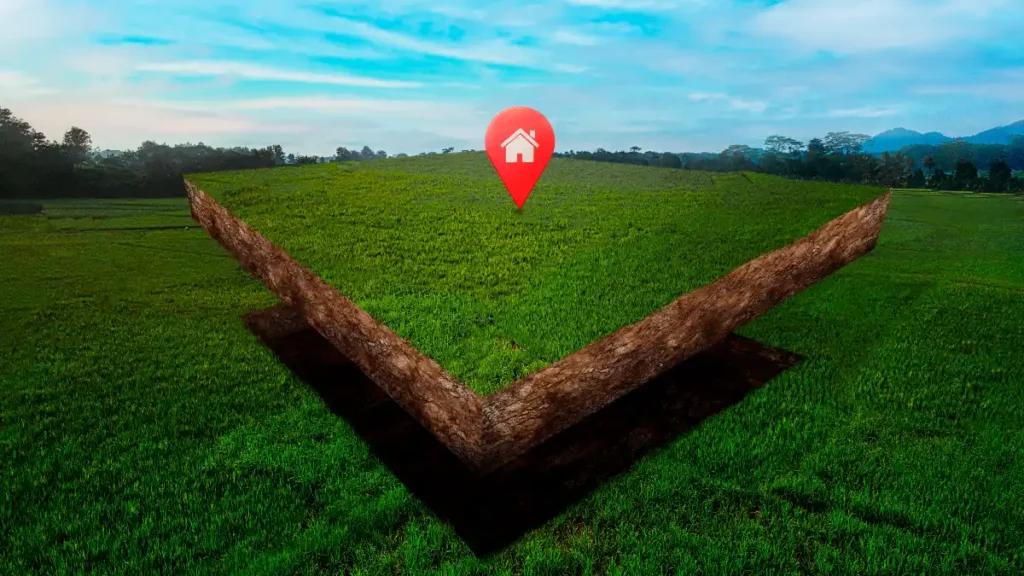
Finding cheap land is the first big step. The key is to look for land with no utilities in rural areas with very few building rules or zoning laws. This is often called “unrestricted land,” and it means you have the freedom to build a small cabin and live how you want.
We used websites like LandWatch and Zillow and searched with specific keywords like “unrestricted,” “no covenants,” or “raw land.” We set the filter to “land only” and sorted the price from low to high.
When you look for land, you need to be a detective. Here are some critical things to check:
- Legal Access: Does the land touch a public road? If not, you need a legal easement to cross a neighbor’s property. Without it, you are landlocked.
- Zoning and Covenants: Confirm that the land is truly unrestricted. Covenants are private rules that can prevent you from building a small home or living off-grid.
- Sunlight: Visit the property and use a compass app. You need a large, clear area facing south for your solar panels to work well.
- Water Potential: Look for signs of water. Does the area get decent rainfall? Are there creeks nearby? This is vital for a rainwater system.
The Off-Grid Build: A Visual Dashboard
Budget Breakdown: $14,200
Power System Flow
- 1. Generation 4 x 400W Solar Panels capture sunlight.
- 2. Storage 2 x 100Ah LiFePO4 Batteries store energy.
- 3. Conversion & Management An All-in-One Inverter converts power for use.
Water System Flow
- 1. Collection Gutters catch rain from the roof.
- 2. Storage A 1,500-gallon cistern holds the collected water.
- 3. Pressure A 12V pump sends water to the cabin.
- 4. Filtration A 3-stage filter system makes it safe to drink.
Shelter: Building a Livable Cabin for $6,000
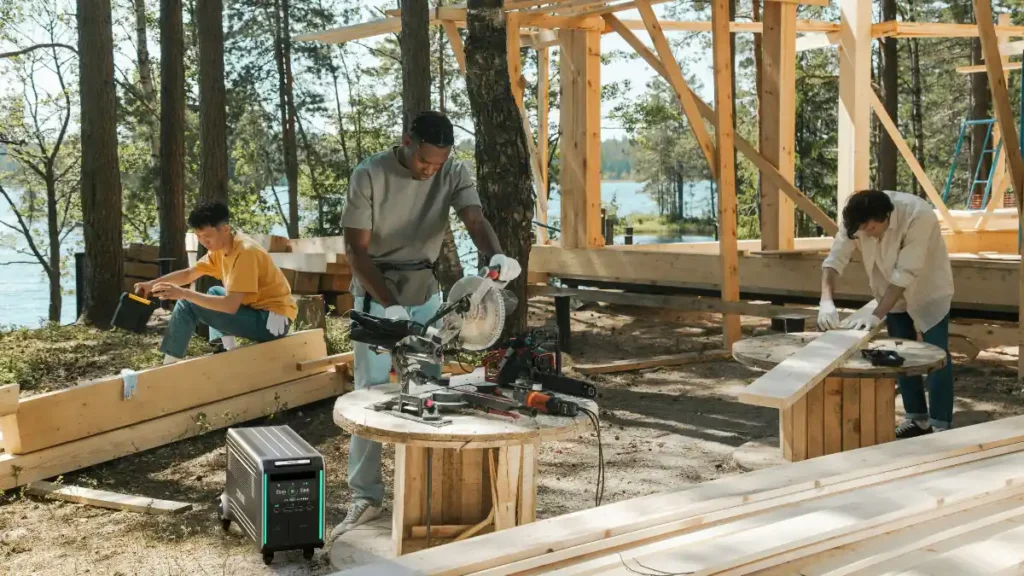
You cannot build a normal house for $6,000. So, we did not. We built a small, simple cabin that was 16 feet by 20 feet. That gave us 320 square feet of living space. It is small, but it is all ours.
We saved thousands by avoiding a concrete slab foundation. Instead, we built the cabin on a post-and-pier foundation. This uses concrete blocks set on gravel footings to hold up heavy wood posts. It is strong, uses very little concrete, and is perfect for a DIY builder.
Finding cheap materials was a job in itself. Here are the best sources we found:
- Facebook Marketplace & Craigslist: Look in the “free” and “materials” sections daily. We found a set of five good windows from a guy for $200.
- Habitat for Humanity ReStores: These stores sell used building materials very cheaply. We found our front door and kitchen sink there.
- Local Sawmills: A local sawmill can sell you rough-cut lumber for much less than a big box store.
- Demolition Sites: If you see a building being torn down, ask the crew if you can take some of the old lumber. Always get permission first.
This was a 100% DIY project. The $6,000 budget was only for materials. The labor was free because we did it ourselves.
Shelter Cost Mini-Breakdown:
- Foundation: $500
- Framing: $2,000
- Roofing: $1,000
- Insulation (Used rigid foam board): $800
- Windows & Door: $700
- Interior Basics (Plywood Walls): $1,000
Power: Our $2,800 DIY Off-Grid Solar Setup
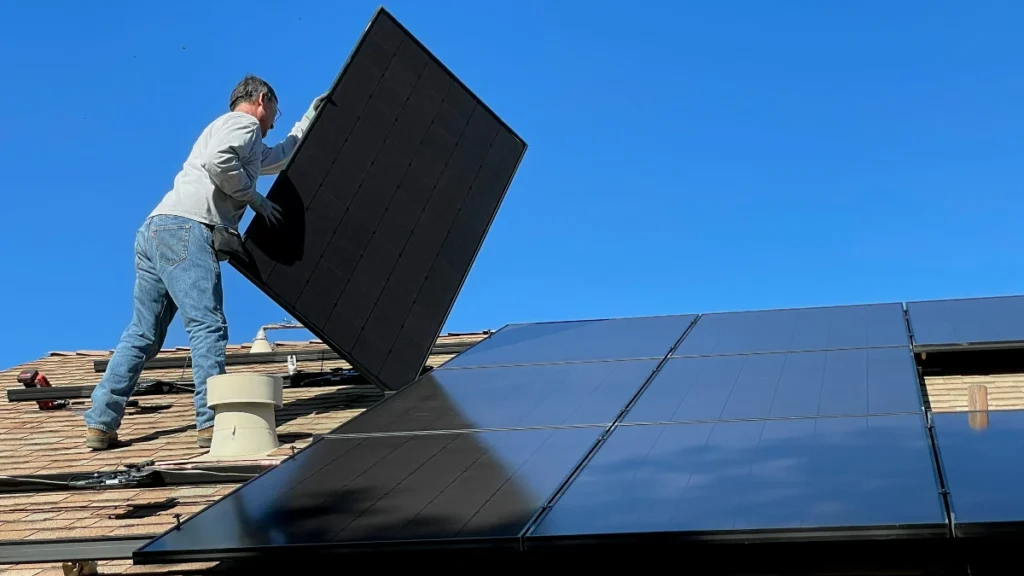
Getting power was a big deal. Pre-made solar kits can cost a lot. By buying the parts and doing it ourselves, we built our system for just $2,800.
Our system is small and made for essential needs. Before you buy anything, do an energy audit. Make a list of every single thing you need to power and how many watts it uses. This helps you build a system that meets your needs without wasting money.
Our Exact Component List:
- Solar Panels (4 x 400W): These create the power. We got four large panels and faced them south for max sun.
- All-in-One Inverter/Charge Controller (3000W 24V): This is the brain of the system. The charge controller protects your batteries. The inverter changes battery power (DC) into wall-outlet power (AC). An all-in-one unit is great for beginners.
- Batteries (2 x 100Ah 24V LiFePO4): This is your power storage. We chose LiFePO4 (lithium iron phosphate) batteries. They are the best choice for an off-grid system because they last for many years and are very safe.
What our system can actually run:
- Several LED lights
- A laptop and phone charger
- A small, super-efficient 12V/24V chest-style fridge/freezer
- Our small water pump
- A small fan in the summer
This system is about managing your power. You learn to do power-hungry tasks like charging tools during the middle of a sunny day. It is a different way of thinking.
Water & Sanitation: The $1,900 Solution for Clean Water and Waste

Drilling a well can cost $15,000 or more. Our solution was a fraction of that cost: rainwater harvesting. It is simple, effective, and you can build it yourself.
Our Water System ($1,200): Our setup is a complete process from roof to tap.
- Gutters: Collect rain from the metal roof.
- First-Flush Diverter: A simple but important pipe that catches and dumps the first few gallons of rain. This washes the dust and leaves off the roof so they do not go in your tank.
- Cistern: A 1,500-gallon, food-safe plastic tank to store the clean water.
- Water Pump: A small 12V pump brings water into the cabin when we turn on the faucet.
- Filtration: Before we drink it, the water goes through three filters: a sediment filter for dirt, a carbon filter for taste, and a UV light sterilizer to kill anything harmful.
Our Sanitation System ($700): We use a composting toilet. It does not use any water and does not smell if you manage it right. It separates liquids from solids. The solids are mixed with a carbon material like sawdust or coco coir, which stops odors and helps everything break down.
For water from our sink and shower, we have a simple greywater system. The pipe leads outside and waters a bed of mulch and non-edible plants. We are careful to only use biodegradable, plant-safe soaps.
The Bright Side: Positive Impacts of Off-Grid Living!
Ready to build a life of purpose, independence, and positive impact?
Embrace Your Off-Grid Future!